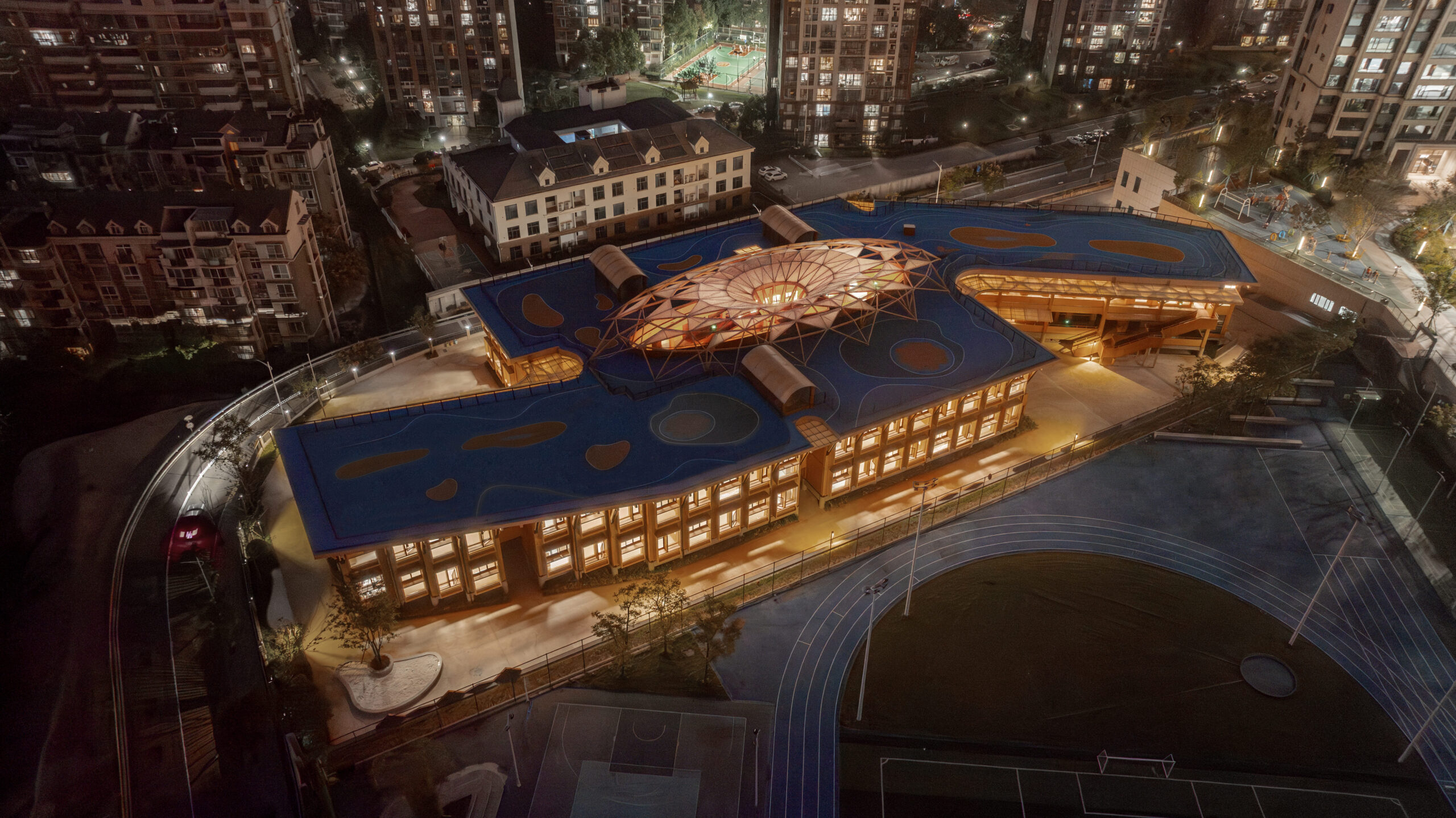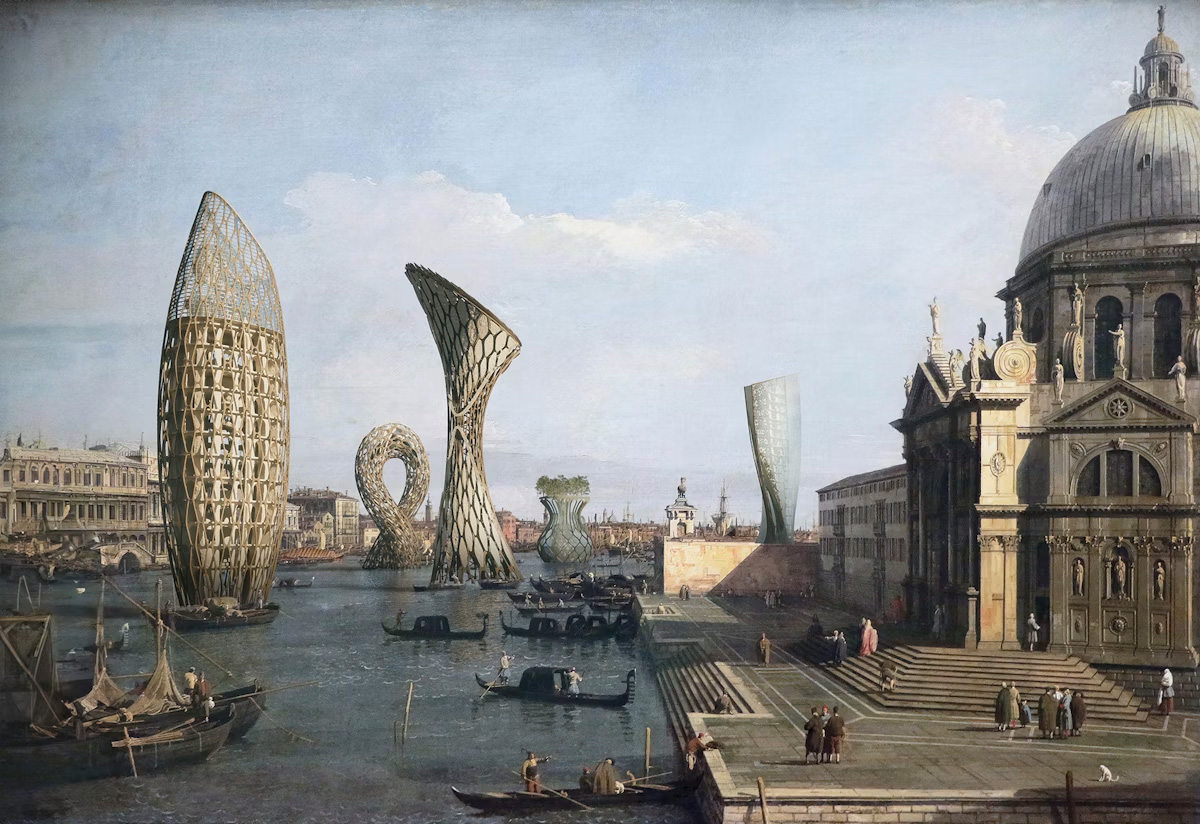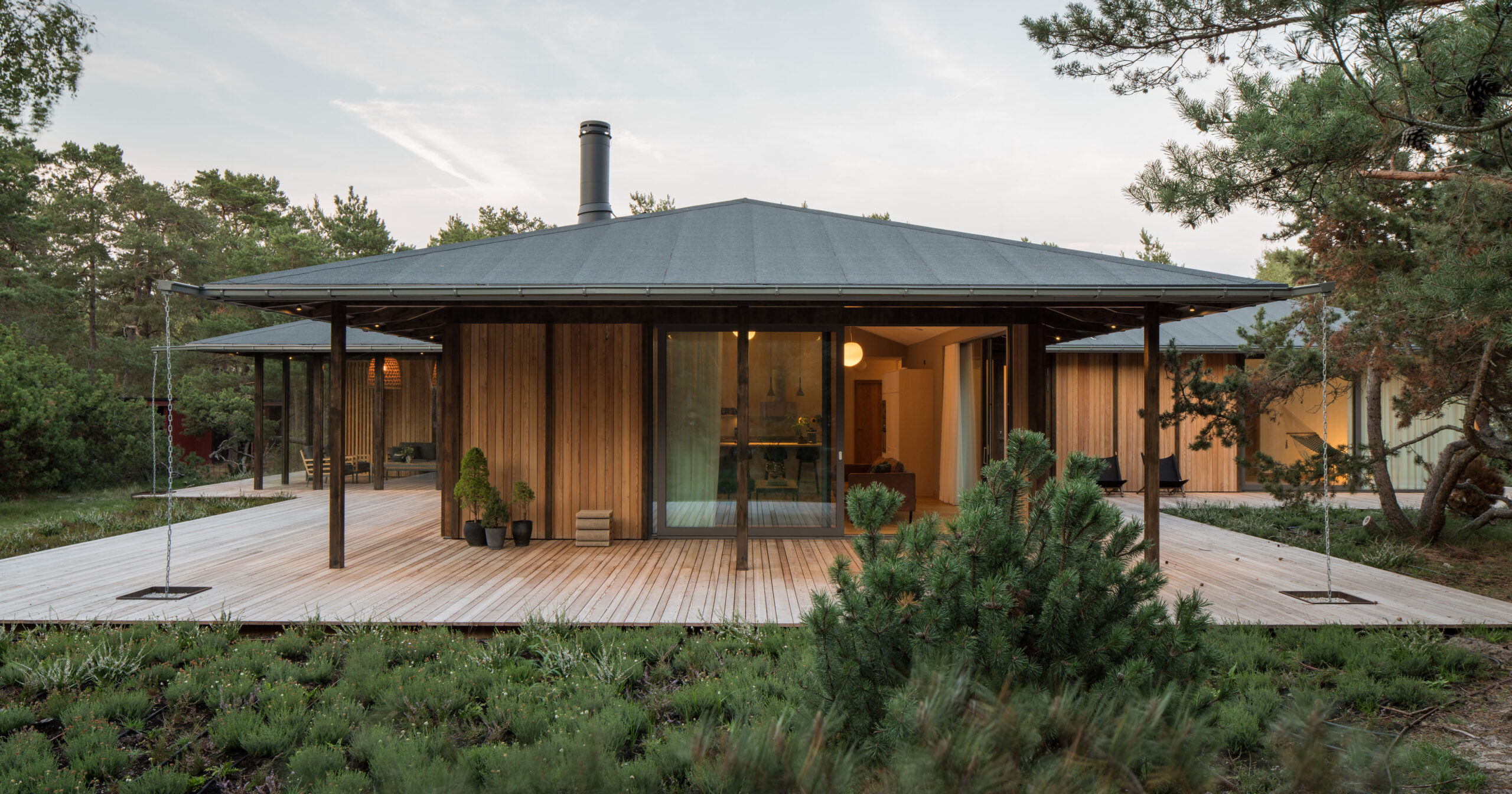Desai Chia uses "camouflaging effect" for secluded Osprey House in New York


Charred wood was used by US studio Desai Chia Architecture to blend this home with the landscape, drawing wildlife to the property and enabling the owners to "inconspicuously observe nature".
The house is located on Shelter Island, which sits between the North and South Forks of the Long Island peninsula and is only accessible by ferry.

Tucked into a grove of trees, the Osprey House overlooks Gardiners Bay and sits on the edge of the Mashomack Preserve. It is accessed via a small, dirt road that winds around the preserve.
It was built to serve as a family home for a local builder, who had worked with the architects on earlier projects.

"Our client, Joe Quinn, wanted to build a home for his family here that would foster their love for beach walks, kayaking, and living within nature," said New York-based Desai Chia Architecture.
To design the home, the team took inspiration from the native osprey birds that are ubiquitous in the area – their nests appearing in trees and atop piers and telephone poles.

"Their marine nature, adaptability and high nesting places inspired the home's materiality, organisation and relationship with the coast," the team said.
Rising two levels, the house has a rectangular plan with one slanted side.

Angled roof forms were informed by a careful sunlight analysis. Taking cues from nautical forms, the home extends toward the water in a way that resembles a ship's bow.
The exterior is wrapped in vertical cypress siding that was charred using the Shou Sugi ban technique, producing a colour that is similar to driftwood found on the beach.

The cladding took cues from "bird blind" observation towers in the preserve, which are designed to blend with the surroundings.
"The camouflaging effect minimises visual disruptions for neighbours on the coast and encourages wildlife to occupy the lot, while allowing occupants to inconspicuously observe nature from a perch embedded in the landscape," the team said.

Inside the 3,700-square-foot (344-square-metre) house, the studio created airy rooms and a fluid layout.
The layout follows the local tradition of "upside-down" houses, which place social spaces on the upper floor.

In the Osprey House, the upper level holds an open-concept space for cooking, eating and living, which adjoins a covered terrace.
"This offers the raised gathering spaces expansive open views of the marshland ecosystem, and gentle light from the north and east," the team said.
This upper floor also has a media room and a primary bedroom suite.
The ground level holds three bedrooms, a family room and a covered terrace, along with an entry vestibule and a carport. Tall beach grass on the exterior helps ensure privacy.

The material palette is earthy and restrained.
The same charred cypress used on the exterior is found indoors, where it adds "warmth and texture". White oak was used for flooring and ceiling panel veneers.

A clerestory running along the roof ridge brings in southern light, while expansive glazing on the north facade ushers in "soft, even lighting throughout the day".
Other projects by Desai Chia Architecture include a farm-inspired home in Upstate New York composed of "crisp silhouettes, and a multi-structure dwelling in Connecticut that has courtyards for exhibiting artwork.
The photography is by Jake Balston.
Project credits:
Architect: Desai Chia Architecture
Contractor: Aran Inc
Structural engineer: Condon Engineering
Lighting: Pierce Lighting Studio
The post Desai Chia uses "camouflaging effect" for secluded Osprey House in New York appeared first on Dezeen.




















































